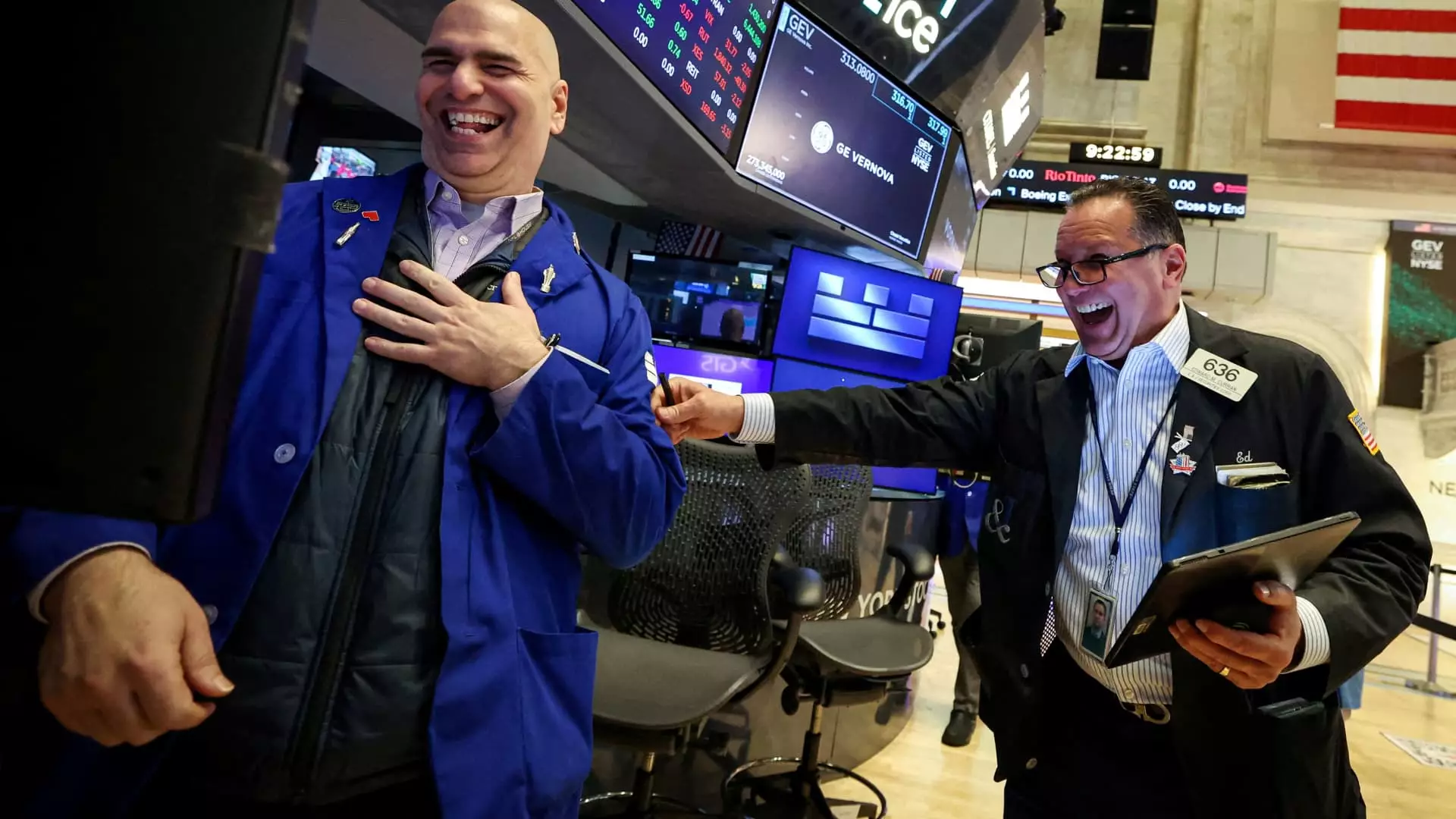In the realm of finance, few phenomena are as captivating as the behavior of short sellers during a market rally. The most recent surge in the stock market, marked by a rapid two-day increase, has generated significant interest among investors and analysts alike. This sharp upswing was, in large part, driven by the hectic activities of short sellers, who were effectively forced to scramble as the market shifted in a direction contrary to their expectations. Short selling, an investment strategy predicated on the belief that a stock’s price will fall, can quickly turn into a double-edged sword when the market defies predictions, resulting in what is known as a short squeeze.
Short sellers borrow shares to sell with the aim of buying them back later at a lower price. When the market rallies, however, these investors find themselves caught in a vice, needing to buy back shares at inflated prices to mitigate their losses. This creates an artificially high demand for stocks, contributing to the rally’s momentum. Recent analyses, including insights from Goldman Sachs, highlight how this behavior intertwined with geopolitical factors—like trade tensions and Federal Reserve commentary—created a perfect storm for market volatility.
The Role of Narrative in Market Movements
The market’s response to political rhetoric cannot be overstated. Recently, comments from President Trump regarding international trade with China and his stance on Federal Reserve Chair Jerome Powell played a crucial role in shaping investor sentiment. Initially, Trump’s tough stance and the subsequent abrupt pivots spurred uncertainty and bearish bets across various sectors. However, once the narrative shifted towards potential easing of trade tensions, a wave of positive sentiment washed over the market, allowing short covering to flourish.
This behavior illustrates a broader truth about market dynamics: the narratives and perceptions surrounding stocks can often carry more weight than the actual economic indicators. With reports of a potential grand deal looming over trade negotiations, the market responded optimistically, leading to significant price increases in major indices like the S&P 500 and Dow Jones. The concept of a “big deal” as posited by Treasury Secretary Scott Bessent served to further fuel this optimistic narrative, even in the absence of concrete agreements.
The Impact of Investor Psychology
Understanding market movements in this context necessitates a look into investor psychology. The behavior of hedge funds and other institutional investors during such rallies showcases how fear and optimism can spiral into dramatic market actions. When short sellers perceive a risk of loss, their reaction often amplifies market movements. The “squeeze risk” mentioned by Goldman Sachs embodies the collective anxiety felt among traders who are exposed to a rapid upswing, prompting a frantic rush to cover their positions.
Moreover, this psychological aspect is compounded when the market appears to rally on the back of shifting political statements rather than solid economic fundamentals. The initial euphoria seen in market reactions can lead to overvaluation, especially if backed only by speculative movements rather than fundamentally sound investments. The stock prices may surge, but the lack of genuine long-buying from hedge funds indicates a shallow pool of conviction underpinning the rally.
The Future Implications of Short Covering
As the market gains traction, it’s crucial to keep an eye on potential turning points. The dynamic of short covering leading to spikes in stock prices raises pertinent questions about the sustainability of such rallies. As noted by industry insiders, hedge funds have been reluctant to transition from covering shorts to initiating long positions, illustrating a skepticism that suggests many are still on the defensive.
Investors should remain vigilant, watching for signs of longer-term buyers stepping in to stabilize this volatility. A successful transition from short-covering reflexes to strategic, longer-term investments would indicate a more robust rally—a sign that could inspire genuine confidence in the market’s trajectory. As the delicate dance between short sellers and bullish investors continues, understanding these complexities will remain vital for anyone navigating the unpredictable waters of the stock market.
The interplay of factors influencing market dynamics is a reminder of the inherent uncertainty that characterizes financial markets. Whether influenced by whispers from Washington or divergent opinions within hedge funds, market movements tell a story that extends beyond numbers—one filled with human emotion, strategic maneuvers, and the ever-looming potential for market corrections.

